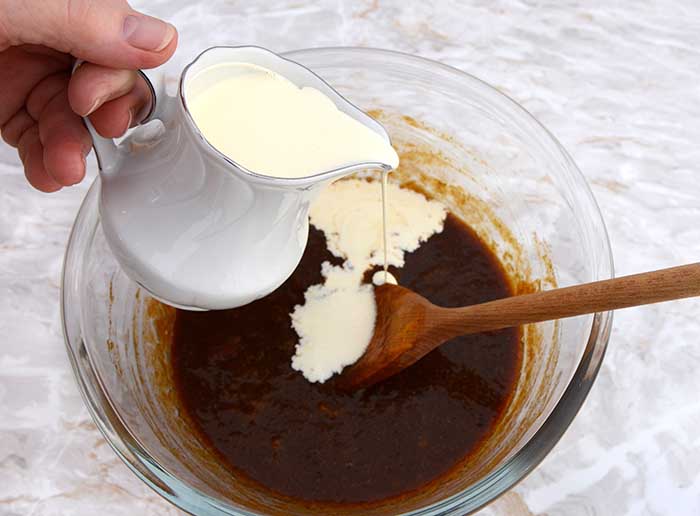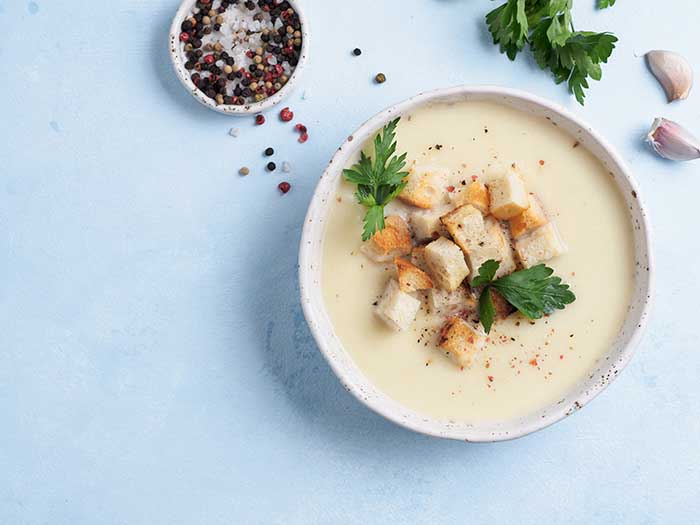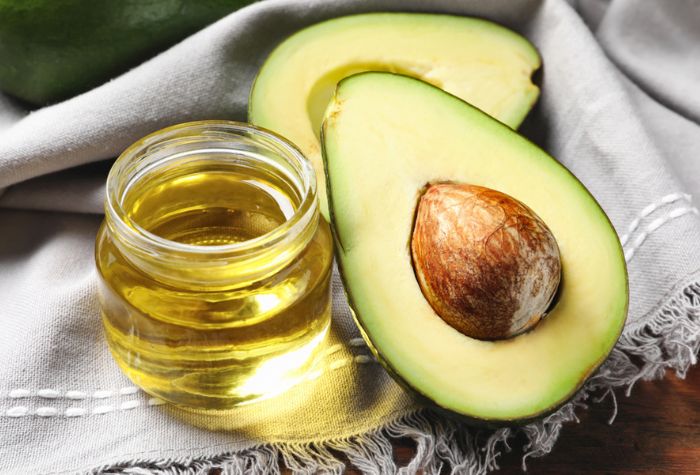Battered fried fish is incredible served fresh out of the fryer. But what’s the best way to enjoy leftovers without ruining its beautiful crispy flavor? Discover the best ways to reheat battered fried fish without it going soggy.
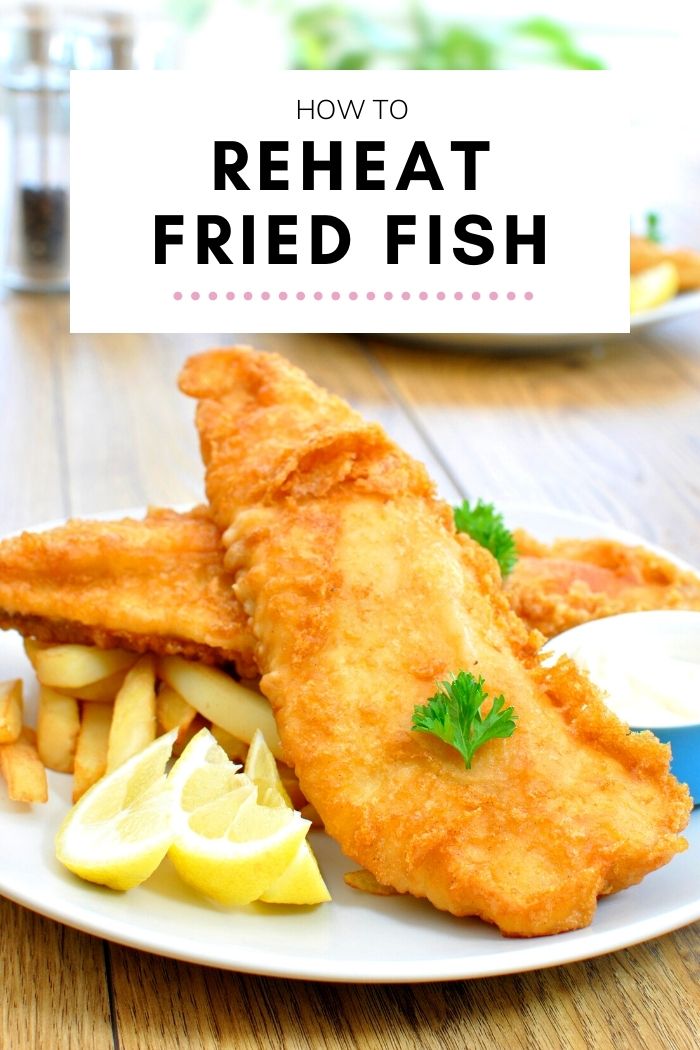
Oven
The oven is a great way to get food sizzling hot with a crispy crust. However, it can get tricky if you’re not sure how to do it. There is a lot of heat involved in using a conventional oven, and at times, if you don’t do it right, you may end up with burnt food that isn’t adequately heated.
The oven is the top choice for reheating fish. The major reason being that this method is easy, and an oven is convenient to use since you probably have it in your kitchen already.
You will need aluminum foil, a regular conventional oven, and the fried fish you will be reheating for this method. An internal temperature meat probe will be an added advantage and take the guessing out of the process.
The first thing that you will need to do is preheat the oven to 275˚F. Then wrap the fish up in aluminum foil place it in the center of the oven rack. Heat it for 10 to 15 minutes until the internal temperature reaches 145˚F. Once it is sufficiently heated up, you can serve as desired.
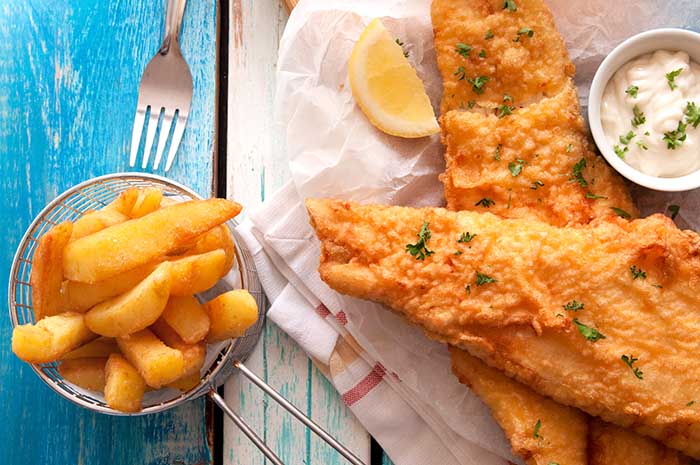
Skillet
Heating fish in a skillet is a good option if you don’t have an oven or prefer to use a stovetop. It’s essential to make sure that you get a good quality skillet, though. Usually, cast iron works very well. You want it to distribute heat evenly. The advantage of this method is that it’s faster than using an oven.
You will need a skillet and some oil to ensure the fish won’t stick to the pan. The point is to refry the fish. Place the fish in the hot pan and start refrying. When you think they are reheated enough, you can remove them and place them on paper towels to soak up the excess oil.
If you don’t have a cast iron skillet, an electric frying pan is also an efficient means of reheating leftover fish. Keeping a constant heat setting will help yield a golden, crispy, flaky fish.
The downside with this method is that you use more oil in the fish, which isn’t the best for your health.
Broiler
This method means using the broiler setting on your regular oven, usually between 500˚F and 550˚F. This is a high setting, and broiling is done quickly. You will only need 5 minutes to reheat the fish, which is much faster than other methods, including the oven. It uses the upper element of the oven. Broiling works similarly to grilling.
Since broiling in an oven uses very high temperatures, start by heating the fish for about 2 minutes, check on it, then put it back if necessary. It would be better to do it this way than to end up with burnt fish.
The upside of broiling is that it gives your food a crunchy exterior. You will need to make sure to keep the over door open just a bit so steam doesn’t well up and make the fish soggy.
Toaster Oven
A toaster oven is a fan favorite because it’s small enough to fit on a countertop, is fast, and distributes heat evenly. The downside is that it is smaller than a regular oven. This means you can’t heat the same amount of food at once. But with fish, this should be okay. When at the right temperature, the fish is heated evenly and gets a crispy crust.
To use the toaster oven, first preheat anywhere from 170˚F to 350˚F. Then wrap up the fish in aluminum foil. This will help to distribute the heat further well.
Heat the fish for up to 15 minutes. You can use an internal probe to make sure that the fish reaches an internal temperature of 145˚F.
Steamer
Steaming is a healthier way of reheating fish because there’s no extra oil being added. For this method, you will need a broiler.
How does it work? Well, there should be three layers: A layer of water, a second layer with holes or a sieve, and the third will be the fish. The steam will then hit the fish.
The first thing to do is wrap the fish in aluminum foil. Then steam the fish for 5 to 10 minutes. Make sure the water is boiling first, so you get the steam needed. When you are satisfied, serve as desired.
Deep Fryer
The deep fryer may not be the healthiest option, but it gets the job done. If this is the route you take, make sure your home deep fryer has enough oil to submerge fish in.
Heat the oil, and make sure to have tongs to place the fish in, so you don’t get burnt. If the oil is not hot enough, it won’t give you a crispy, golden fish.
Lower the fish into the fryer and let it reheat for 3 to 5 minutes. During this time, turn the fish over and make sure all sides are heated equally. Then, remove the fish from the oil and place it on paper towels to soak up the excess oil.
Grill
Grilling makes use of high heat. Wrap up the fish in aluminum foil to avoid it breaking apart. Make sure to garnish the fish, though, before wrapping it.
Set the grill to low heat and then reheat the wrapped fish for 45 minutes to an hour. This isn’t the fastest method, so you might need to consider other ways if you are on a time crunch.
FAQ
Below are some answers to the most frequently asked questions about reheating battered fried fish.
Can I reheat fried fish in the microwave?
No. When you reheat fried fish in the microwave, you may lose the crunchiness. Also, there’s a higher chance of it drying out. The microwave can give the fish a rubber-like texture.
How long can you keep cooked fish?
The amount of time you can keep cooked fish depends mostly on how and where you store it. When kept in the fridge, you can keep it for about four days.
Can you freeze cooked fish?
Yes, you can. Cooked fish will stay fresh in the freezer for up to 1 month. It’s important to remember that the refrigerator slows down fermentation but does not stop it altogether.

